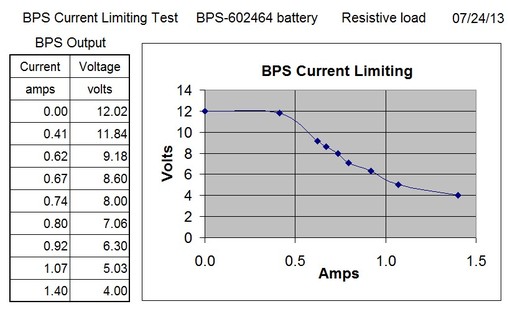The S-CAB battery power supply (BPS) provides 12 volt on-board power from a 3.7 volt lithium polymer (LiPo) battery. The design emphasizes safety; for battery, BPS components and the loco in which BPS is installed. The battery charger built into the BPS ensures the battery cannot be over-charged. A protective circuit module (PCM) integrated into the battery assembly protects the battery from over-current and under-voltage conditions. In addition, BPS output includes current limiting to prevent over-load conditions from damaging BPS components.
BPS specifications define a maximum current output of 500 mA, which is adequate for HO, On3, On30 and some S scale locomotives, so long as they are in reasonably good mechanical condition. Designing for higher output would have required a larger circuit board and excluded BPS from many HO applications due to space limitations. So the trade-off between current output and size is a compromise.
Based on operational experience and improved characteristics of both battery and PCM, BPS overload behavior is safe and predictable, as demonstrated in the following graph. Output voltage is constant 12 volts for current output up to 400 mA and drops to about 11 volts at 500 mA. Beyond 500 mA, output voltage drops significantly due to current limiting built into BPS.
This test used a resistor as the load. A loco motor behaves differently. As voltage drops, the motor just won't produce enough power to move the loco.
Conclusion: I hope this explains why I want to know the loco motor's full load current when supplying a BPS. It's also the reason BPS installation instructions require a bench test of the BPS before installing in a loco. If a loco runs well on the bench with no load, but does not run when loaded, it may be exceeding the BPS 500 mA rating. In this case, it's the loco mechanism that needs to be examined.
Engineering comment: Using a resistive load extends the current range of the test to 1.4 amps. This required a
resistor of less than 3 ohms. As voltage drops, a motor will slow and ultimately stall. With current limiting, the higher the stall current, the lower the voltage. Leaving a loco decoder on full throttle with the loco stalled may be hard on the decoder and/or the motor, but the voltage will be low enough to prevent serious damage. The resistance of a HO scale loco motor is somewhat greater than 3 ohms, which means the stall current will be less than 1.4 amps. Most decoders can survive this condition.
resistor of less than 3 ohms. As voltage drops, a motor will slow and ultimately stall. With current limiting, the higher the stall current, the lower the voltage. Leaving a loco decoder on full throttle with the loco stalled may be hard on the decoder and/or the motor, but the voltage will be low enough to prevent serious damage. The resistance of a HO scale loco motor is somewhat greater than 3 ohms, which means the stall current will be less than 1.4 amps. Most decoders can survive this condition.
